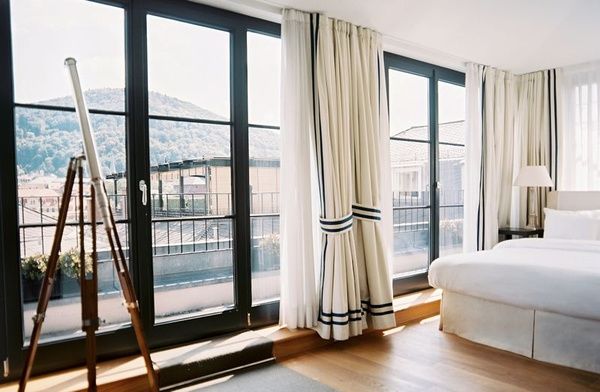 Approaching winter time can be a stressful time, particularly in making the house warm to pass through the season. Nationwide, energy saving is more and more become a concern as the energy price rises. There are many advises for keeping the house warm, such as installing double glazing, proper insulation, and repair inefficient heating system. However, there are cheap ways to save money when heating the house.
Approaching winter time can be a stressful time, particularly in making the house warm to pass through the season. Nationwide, energy saving is more and more become a concern as the energy price rises. There are many advises for keeping the house warm, such as installing double glazing, proper insulation, and repair inefficient heating system. However, there are cheap ways to save money when heating the house.
Keep Your House Warm Over the Winter
- Use thick curtain
Curtains with a thermal lining are a relatively cheap option. The thicker the better. Another alternative use PVC shower curtains. Placing a curtain in front of doors to the outside adds another layer of protection.
- Allow the sunlight
Let the sunlight in during the day. It’s important to try to use as much natural – and free – heat (in the form of sunlight) as possible. Window shades and curtains should be kept open during the day. Closing the curtains as soon as dusk falls will maximize the house’s potential to retain that heat.
- Prevent heat loss from the chimney
This can be done has by put a chimney balloon, made from a special laminate, can be bought for about £20 and works by being placed inside the chimney hole. It’s then inflated until it completely shuts out any incoming cold air or escaping the heat. Just be sure not to start a fire without removing it.
- Install ‘double glazing’
Double glazing is heat-efficient but it’s relatively costly. Another alternative is put across [single-glazed] windows that can imitate the same effect, albeit to a lesser degree.
- Insulate the whole house by DIY
Do it yourself (DIY) loft insulation is a possibility. Rolls of foam insulation are cheap and three rolls of 8in deep foam should be enough to give most lofts an important layer of protection. Mineral wool (such as Rockwool or Rocksil), glass fiber and recycled paper products all work well. It is important to wear a facemask, goggles and protective clothing if deciding to do the DIY project, and leave sufficient gaps around the eaves to avoid condensation.
- Monitor for mini-droughts
Mini holes can be the point for the cold temperature to get in. The same goes for keyholes, which can be protected with simple circular (keyhole covers) that slip over the top. Cat or dog flaps can also be filled with some sheep’s wool insulation or pieces of blanket.
- Shut up the unused room
Keeping doors closed will prevent cold air moving into the rest of the house and contain the heat you’ve generated in a smaller area.
- Try DIY drought excluder
Simple draught excluders can be made by cutting an old pair of tights and stuffing them with socks. The stuffing can be almost anything from rice and lentils to gravel.
- Clear the radiators
Try and avoid placing large pieces of furniture in front of them. At least in the short-term, because the sofa is absorbing heat.
- Put a shelf above the radiator
Put a shelf above it to stop the hot air rising directly above the radiator. Especially if a high ceiling is available, the put the shelf above the radiator because this also helps channel the warmth.
- Set timer for heating
It’s a myth that keeping it on all day is better. If it’s very cold, the timer should be set to switch the heating on earlier, rather than turning the thermostat up to warm the house rapidly.
- Avoid inefficient loft hatch
Insulating loft hatch can be done with same self-adhesive strips as for window and doors. It’s also worth checking that none of the roof tiles is loose or missing.
- Cover bare floorboards
Floors account for as much as 10% of heat loss if they’re not insulated. Carpets came into being for a reason. Those with wooden flooring have to deal with heat loss. Rugs and blankets can help mitigate this and have the added bonus of keeping feet warm.
- Use tin foil
One way to prevent unnecessary heat loss from radiators, particularly on those attached to external walls, is to use heat reflective aluminum foil behind the radiator. This prevents heat disappearing through the wall by reflecting it back into the room. There is Foil specially designed for the purpose can be bought for under £10, but good quality kitchen foil can also be used but not as effective.



